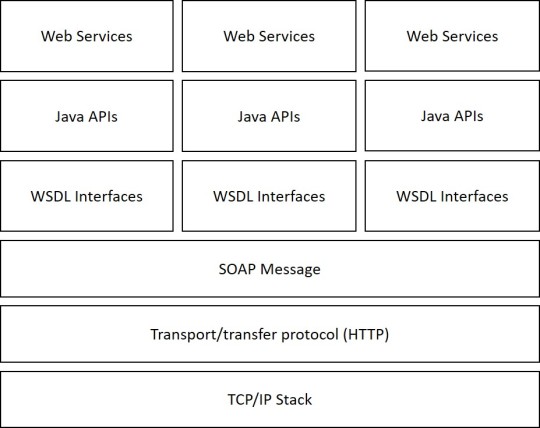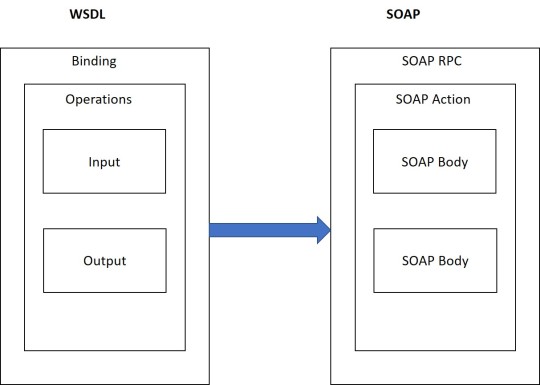#NET vs Codeigniter
Explore tagged Tumblr posts
Text
ASP.NET vs CodeIgniter: A Comparative Study [2022]
ASP.NET vs CodeIgniter: A Comparative Study [2022]
Web development is inevitable for businesses of all types and sizes to promote digital growth and efficient operation. Ultimately, it enables businesses to achieve their objectives faster by allowing them to meet their business demands. However, building applications from scratch can be challenging and time-consuming. This is where frameworks come in handy. They help streamline the development…

View On WordPress
0 notes
Text
Server side development 1 – SOAP
Introduction to the web services
Web services are server-side application components, which provides a set of services.
The services of the web service are exposed via API.
An API is a set of functions and procedures allowing the creation of applications that access the features or data of an operating system, application or other service.
Multiple types of clients can communicate with the web service via the API.
Web services vs. Web Applications


WSDL
WSDL stands for Web Services Description Language. It is the standard format for describing a web service. WSDL was developed jointly by Microsoft and IBM.
Features of WSDL
WSDL is an XML based protocol for information exchange in decentralized and distributed environments.
WSDL definitions describe how to access a web service and what operations it will perform.
WSDL is a language for describing how to interface with XML based services.
WSDL is and integral part of Universal Description, Discovery and Integration (UDDI), an XML based worldwide business registry.
WSDL is the language that UDDI uses
WSDL Usage
WSDL is often used in combination with SOAP and XML schema to provide web services over the internet. A client program connecting to a web service can read the WSDL to determine what functions are available on the server. Any special data types used are embedded in the WSDL file in the form of XML schema. The client can then use SOAP to actually call one of the functions listed in the WSDL.
Ref: https://www.tutorialspoint.com/wsdl/wsdl_introduction.htm
Specifies three fundamental properties:
1. What a service does – Operations (methods) provided by the service.
2. How a service is accessed – Data format and protocol details.
3. Where a service is located – Address (URL) details.
The document written in WSDL is also simply called a WSDL (or WSDL document).
The service provides the WSDL document and the web service client uses the WSDL document to create the stub (or to dynamically decode the message).
Stub
A stub is a small program routine that substitutes for a longer program, possibly to be loaded later or that is located remotely. For example, a program that uses Remote Procedure Calls (RPC ) is compiled with stubs that substitute for the program that provides a requested procedure.
The stub accepts the request and then forwards it (through another program) to the remote procedure. When that procedure has completed its service, it returns the results or other status to the stub which passes it back to the program that made the request.
Ref: https://whatis.techtarget.com/definition/stub
WSDL Elements – Type
Use the XML schema language to declare complex data types and elements that are used elsewhere in the WSDL document.
Serve as a container for defining any data types that are not described by the XML schema built-in types.
WSDL Elements – Message
Any WSDL interface is a set of messages that the service behind the interface expects to send and receive.
Messages are abstraction of request and response messages that client and web services exchange.
Messages are constructed from a number of XML schema typed part elements.
Ex:
<message name="getQuoteResponse">
<part name="Result" type="xsd:float"/>
</message>
WSDL Elements – Port type
Define web service functionality at abstract level, grouping sets of message exchanges into operations.
Contain a set of operations that incorporates input, output and fault messages and parameter order.
portType element may have one or more operation elements, each of which defines an RPC style or document style web service method.
WSDL Elements – Binding
Map a portType to a specific protocol, typically SOAP over HTTP, using a specific data encoding style.
One portType can be bound to several different protocols by using more that one port.
Binding style may be either RPC or Document (SOAP)
WSDL Elements – Service
It binds the web service to a specific network addressable location
Contain one or more port elements.
Access point for each port
- portType – The operations performed by the web service.
- message – The message used by the web service.
- types – The data types used by the web service.
- binding – The communication protocols used by the web service.
SOAP
SOAP stands for Simple Object Access Protocol.
SOAP supports both functional oriented and message oriented communication.
SOAP messages are carried as the payloads of some other network protocols.
(EX: HTTP or SMTP or FTP or TCP/IP)
Web services use SOAP as the logical transport mechanism for moving messages between services described by WSDL interfaces.

SOAP combines the data capabilities of XML with the transport capability of HTTP.
SOAP Messaging Modes
RPC/ Literal Document/ Literal
RPC/ Encoded Document/ Encoded
SOAP Messaging
Consistent envelope – Header and body
Consistent data encoding – Based on XML schema type system
Protocol binding framework
SOAP messages have encoding rules:
Defines a serialization mechanism that can be used to exchange instance of application- defined objects.
SOAP Elements – Envelope
Wraps entire message and contain header and body.
Defines an overall framework for expressing what is in a message, who should deal with it and whether it is optional or mandatory.
Envelope is a root XML element.
This tag indicates the start and end of the message to the receiver.
SOAP Elements – Header
An optional element with additional information.
If the header is presented in the message, it must be the immediate child of envelope element.
Header adds meta-data about the content of a SOAP message and extends it with extra information.
Headers may be processed independently of the body.
SOAP Elements – Body
Application- specific message content being communicated as arbitrary XML payloads in the request and response messages.
Fault elements provides information about errors.
This is the only mandatory part of the envelope. Contains the actual message sent for the final recipient
SOAP Elements – Fault
SOAP message that contains a fault element in the body is called a fault message.
SOAP faults are returned to the receiver’s immediate sender.
SOAP Elements – AttachmentPart
SOAP messages may have one or more attachments.
Each AttachmentPart object has a MIME header to indicate the type of data it contains.
MIME (Multipurpose Internet Main Extension) is an internet standard that extends the format of email to support
- Text in character sets other that ASCII.
- Non text attachments: audio, video, images, application programs
- Message bodies with multiple parts
- Header information is non-ASCII character sets
Ref: https://en.m.wikipedia.org/wiki/MIME
Frameworks for SOAP web service development environments
Apache CXF – Java
CodeIgniter – PHP
gSOAP – C and C++
Apache Axis – Java
Jello Framework – GAE/Java
.NET Framework – C#, VB.NET
Implement SOAP services
JAX-WS (Java API for XML Web Services) is a java package/ library for developing web services.
It supports both functional oriented and message-oriented communication via SOAP.
JAX-WS uses the javax.jws package and it uses annotations.
(Ex: @WebService, @WebMethod, @Oneway etc…)
0 notes